Create a payment experience that transforms the movement of money in construction and reshapes the future of an industry.
Company
Built Technologies
Audience
All players in construction including owners, general contractors, subcontractors, suppliers
Industry
Finance
Year
2021
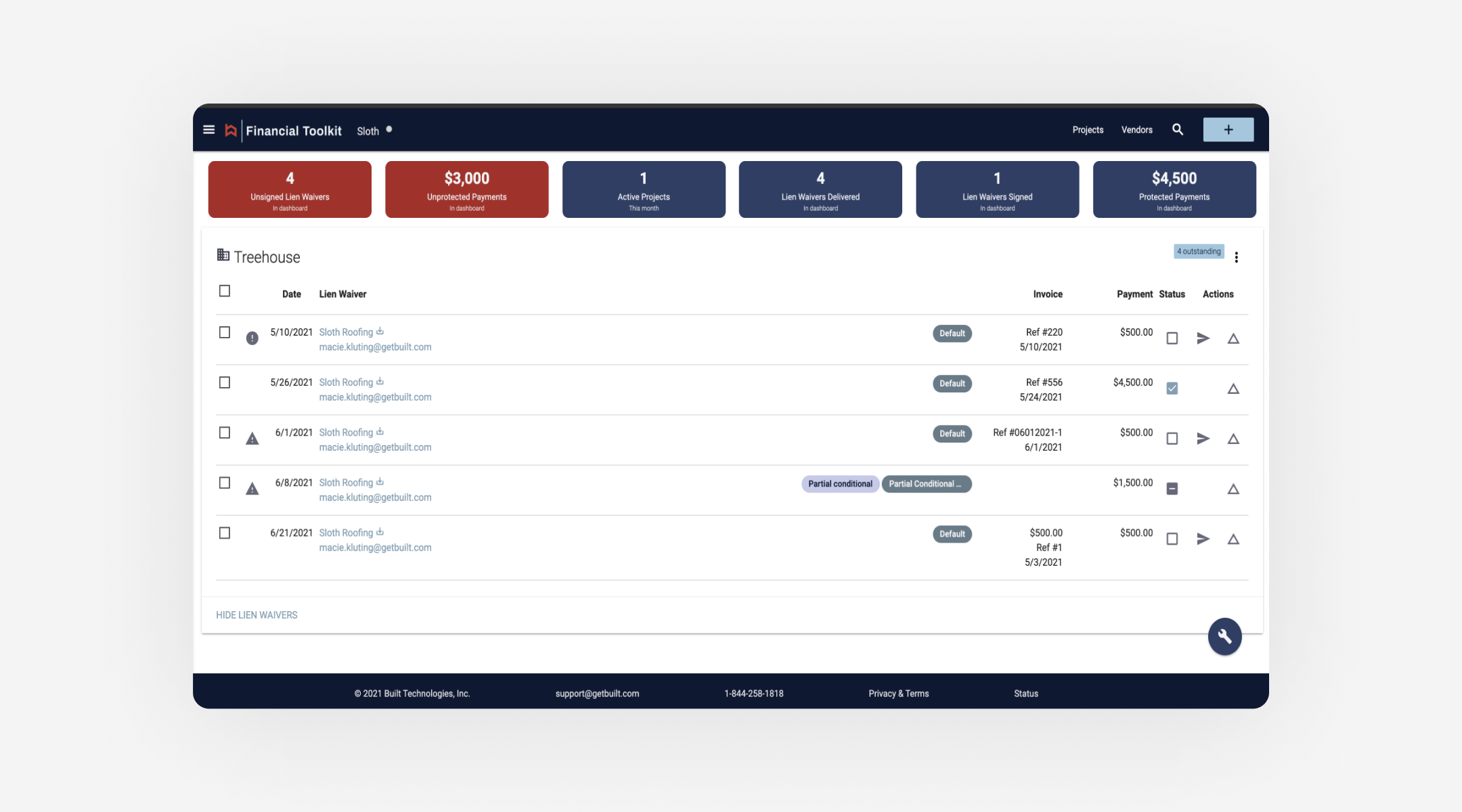
Payments are a complicated and outdated effort in construction. Everyone wants to get paid on time, but the number of people and risk involved in a project can make payments slow. Payors need to ensure that the work has been done and vendors are compliant before they receive payment. Any non-compliant vendors can bring the project to a halt affecting everyone downstream including subcontractors and suppliers. Another pain point is that many contractors still issue paper checks, which introduces more complications and delays as checks get lost in the mail, are sent to the wrong address, or require an in-person signature. Couple offline payments with managing projects via a spreadsheet and it’s easy to see how difficult construction payments can be.
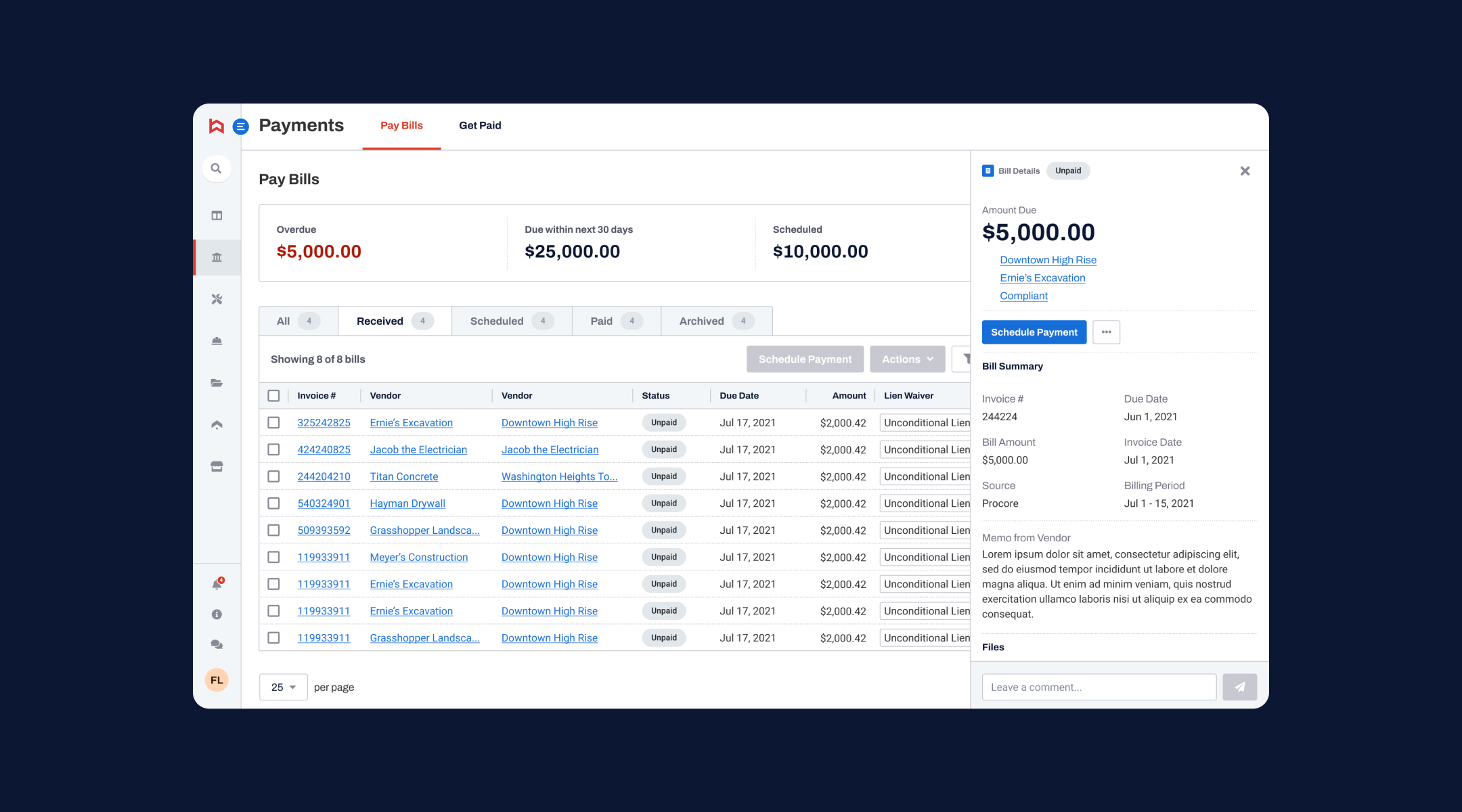
Figure 1: Existing Lien Waiver Solution
Outside of committing ourselves to an ambitious 90-day timeline and being a new employee, who was learning a highly complex industry, a number of challenges were at hand. First, we partnered with a third-party vendor to leverage their payment solution. Although this partnership offered a jumpstart, it required us to understand how their solution would fit the unique needs of construction and cross-collaborate between multiple product teams to construct a seamless solution. Additionally, this payment experience would exist within a brand new construction platform that I was co-designing. To ensure we were designing on-brand and for scale, at every touchpoint, I worked with our design team to understand our pattern eco-system. Lastly, we had to integrate and refactor an existing compliance solution into the new payment product. This involved a learning curve in understanding existing business requirements and how we could fit that solution into the new payment experience to avoid confusing legacy users.

Figure 1: Existing Lien Waiver Solution
Outside of committing ourselves to an ambitious 90-day timeline and being a new employee, who was learning a highly complex industry, a number of challenges were at hand. First, we partnered with a third-party vendor to leverage their payment solution. Although this partnership offered a jumpstart, it required us to understand how their solution would fit the unique needs of construction and cross-collaborate between multiple product teams to construct a seamless solution. Additionally, this payment experience would exist within a brand new construction platform that I was co-designing. To ensure we were designing on-brand and for scale, at every touchpoint, I worked with our design team to understand our pattern eco-system. Lastly, we had to integrate and refactor an existing compliance solution into the new payment product. This involved a learning curve in understanding existing business requirements and how we could fit that solution into the new payment experience to avoid confusing legacy users.

Figure 2: Information Gathering
We held a two-day onsite to kickstart the project. During this time I worked with internal stakeholders, engineers, and our third-party partner to understand project requirements and how our vendor’s solution could best fit into our eco-system. I also collected data and interviews from our sales staff and in-house experts to understand key pain points and what was needed to deliver a meaningful and scalable MVP. Once I had this information at hand I created diagrams to understand the landscape and key touch-points between payors and payees. These documents were used to help me understand product ownership, notification triggers, and user pathways (i.e. how payees who were in-network vs out-of-network could accept payment).
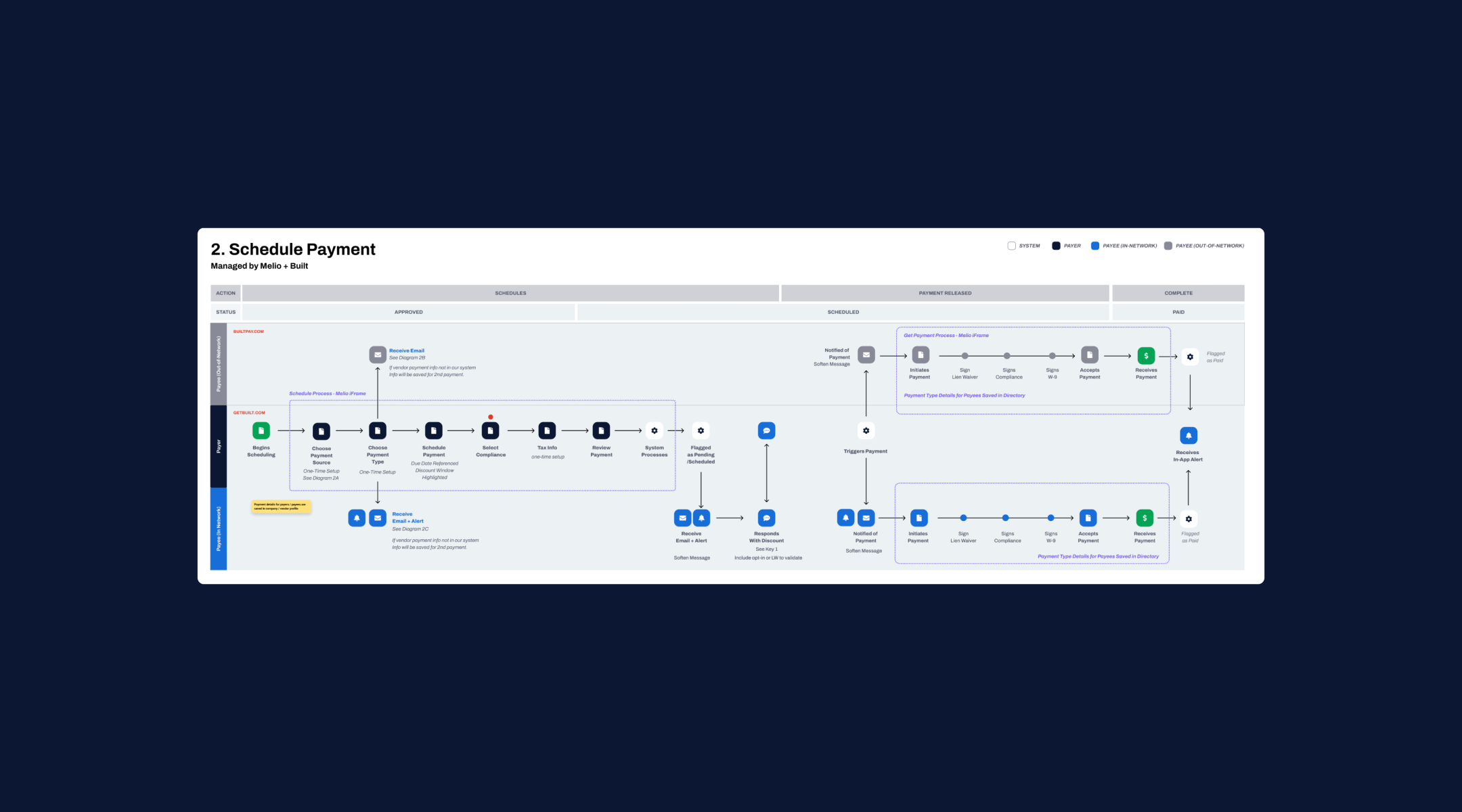
Figure 4: User Journey Diagram
Figure 2: Information Gathering
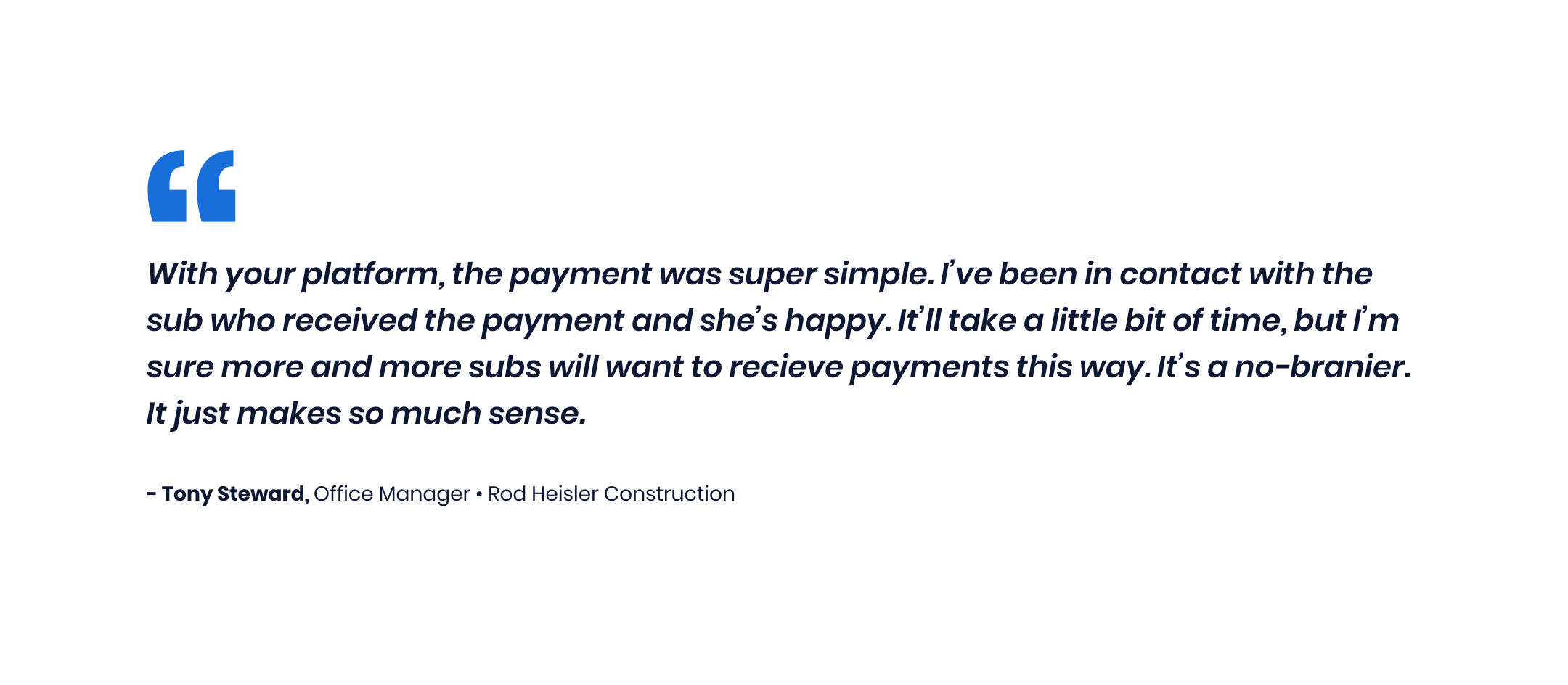
Schedule Payment Design The goal was to create a simple experience that seamlessly fit and could be used across our product ecosystem. To start, I worked with our third-party design team to understand all workflows involved in their solution. This included standalone and batch payment processes along with understanding the various nuances including error states, email triggers, and microcopy. I also worked with engineers to understand how to import bill data from multiple third-party systems. I then analyzed and compared our third-party solution to our design system to see how it could be stitched into our ecosystem while minimizing design debt. I was able to reconstruct our third-party solution using existing patterns such as form patterns and modal wizards.
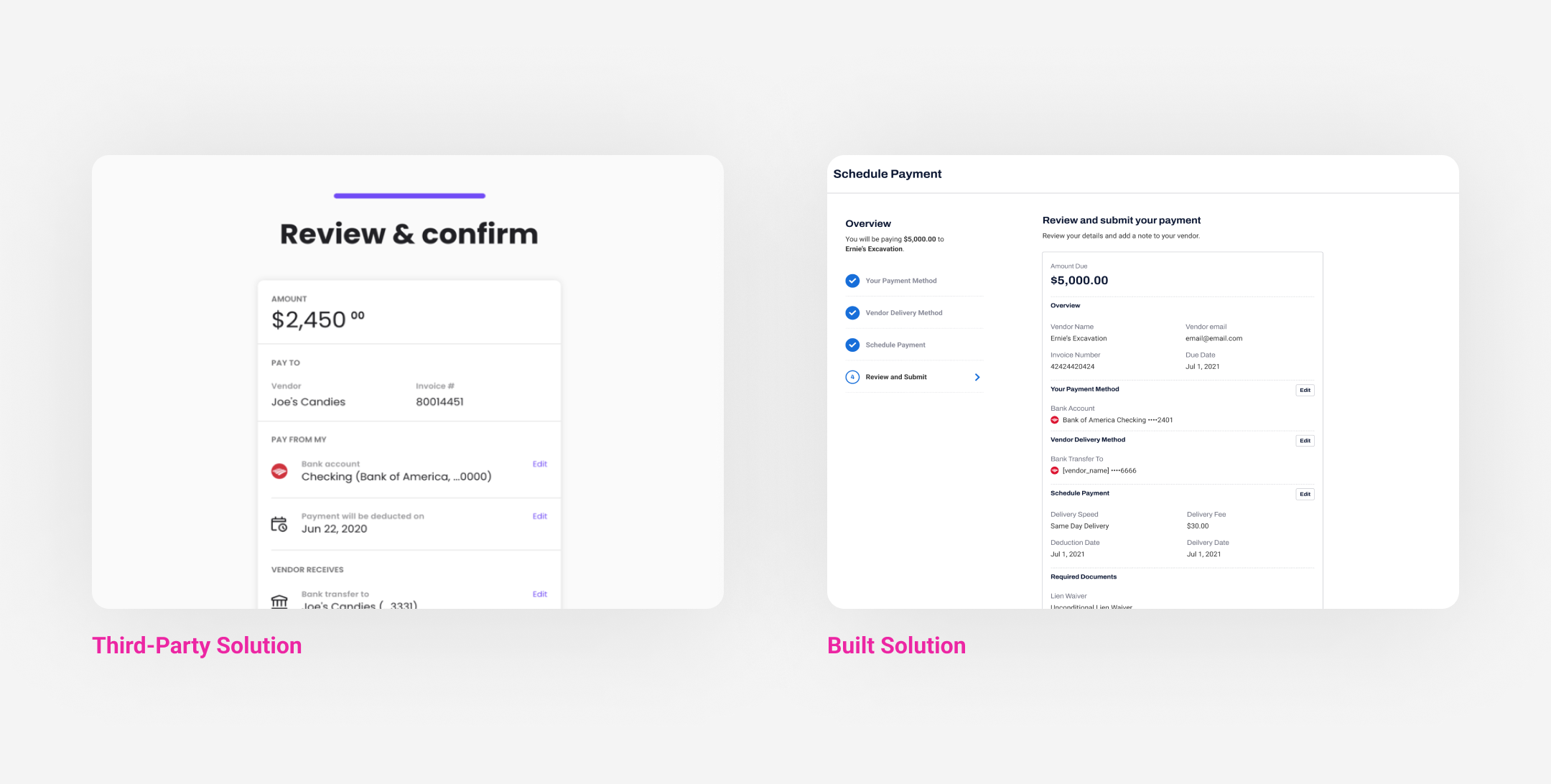
Figure 5: Experience Comparison
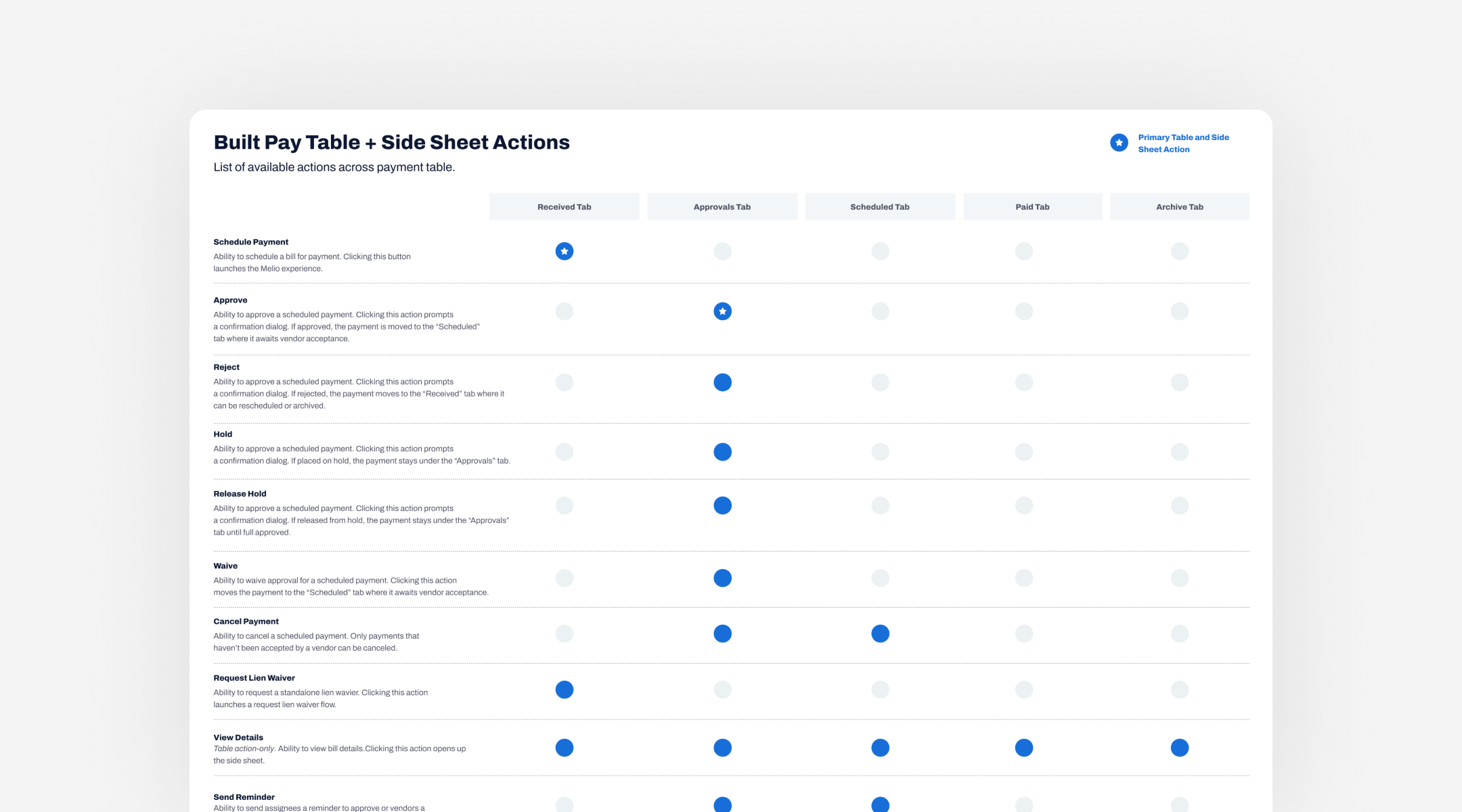
Figure 6: Prioritized Table Actions

GA Release To help prep for our product launch I cross-collaborated with product, engineering, marketing, sales, and customer support. With engineers, I was actively reviewing our beta product and submitting tickets. We also worked with customer support and sales to help them understand the product for help desk documentation and sales demos. I also worked closely with product and marketing in writing and compiling a large set of emails templates, designing onboarding solutions, and establishing goals to monitor user behaviors. Within the first three months of release, we processed over $3M in payments and established a continuous feedback loop with customers to collect valuable feedback to help us prioritize bugs and features. I also collaborated with designers on the lending side to see how banks could use this solution to disburse funds to folks downstream. Our MVP solution was of course only the beginning, but the core foundations were successfully set for future growth. Leadership was excited as this marked the beginning of a new era – becoming the construction payment company that changes the way the world gets built.

Figure 7: Schedule Payment Experience